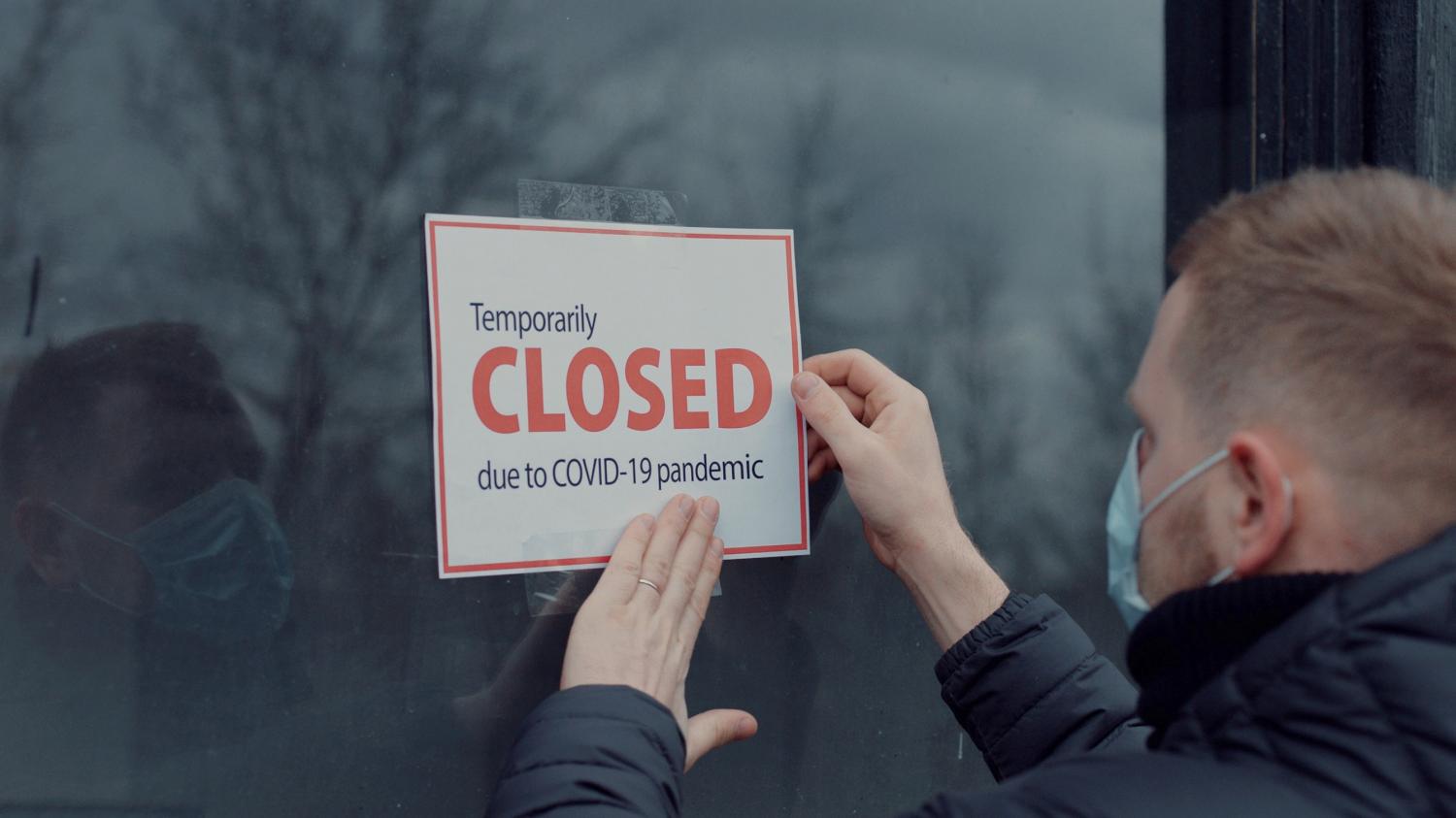This paper is part of the Summer 2020 special edition of the Brookings Papers on Economic Activity, the leading conference series and journal in economics for timely, cutting-edge research about real-world policy issues. The editors are Brookings Nonresident Senior Fellow and Northwestern University Professor of Economics Janice Eberly and Brookings Nonresident Senior Fellow and Harvard University Professor of Economics James Stock. Submit a proposal for future BPEA conferences here.
The U.S. jobs market started recovering relatively soon after tanking in the early months of the coronavirus pandemic, but only modestly, according to two papers discussed at the Brookings Papers on Economic Activity (BPEA) conference on June 25.
Some businesses shuttered in March and April are resuming operations, but often with fewer employees than before the pandemic, according to the papers.
One paper—The U.S. labor market during the beginning of the pandemic recession— also found that employers are cutting the wages of about 11 percent of workers (about twice as many as during the 2007-2009 recession) and skipping scheduled pay increases for others. It analyzed weekly payroll data from Automatic Data Processing (ADP), Inc., covering about 26 million workers.
Its authors are Tomaz Cajner, Leland D. Crane, Ryan A. Decker, Adrian Hamins-Puertolas, and Christopher Kurz of the Federal Reserve Board; Erik Hurst and John Grigsby of the University of Chicago; and Ahu Yildirmaz of ADP.
Their payroll data show that job losses were concentrated among low-wage workers: 37 percent of workers in the bottom fifth of the wage distribution lost their jobs through late April, compared with 9 percent of workers in the top fifth, and 21 percent of employees overall. The rebound has been modest so far. By late May, employment overall was still 15 percent below pre-pandemic levels and, for low-wage workers, 30 percent.
Women experienced sharper employment declines than men—about 4 percentage points more through late April—and very little of the decline is because women work disproportionately in businesses—restaurants and retailers—that have been hard hit by the pandemic, according to the paper. The gap widened slightly through May even as some businesses recalled workers, it said.

“We speculate it could be that the availability of childcare is driving the pattern,” Hurst said in an interview with The Brookings Institution.
The ADP data also suggests that roughly one-third of the employment rebound in May can be attributed to the reopening of temporarily shuttered business, especially businesses with fewer than 50 employees. (Many other businesses continued operating through the pandemic but reduced employment.) For the most part, reopening firms are recalling original employees rather than hiring new ones. That’s a positive trend, Hurst said, because long spells of unemployment, by eroding workers’ skills and attachment to the workforce, can have long-lasting effects.
However, he warned, that at least so far, “when firms are coming back, they are coming back at a fraction of their original size—about 40 percent of employment relative to February.”
A second paper—Measuring the labor market at the onset of the COVID-19 crisis— also found that reopening businesses are primarily recalling former employees rather than hiring new ones—but only some of them. It found that older workers, Black and Asian workers, and unmarried workers have been less likely to start work again.
Its authors—Alexander W. Bartik of the University of Illinois Urbana-Champaign; Marianne Bertrand and Feng Lin of the University of Chicago; and Jesse Rothstein and Matthew Unrath of the University of California at Berkeley—examined monthly government labor market reports as well as daily timeclock data on roughly 500,000 workers from Homebase, a firm that provides scheduling software to small businesses, including restaurants, retailers, and personal service providers. They also looked at surveys of employees at firms using Homebase.
The authors found that the pandemic recession has been very different from recent recessions, such as the 2007-2009 recession. In this one, economic activity collapsed and bottomed out in a few weeks, compared with months or years. The downturn was driven by service businesses such as restaurants and retailers rather than the typically more cyclical manufacturing and construction industries. Also, many more laid-off workers in this recession were expecting to get their jobs back, at least initially.
Like the first paper, the second paper found that job losses in the pandemic recession were concentrated among low-wage workers and that women experienced sharper employment declines than men. It also found that workers 65 and older and younger than 25 were more likely to lose work in April than workers in the 25-to-34 age group. It said workers without a high school degree were 10 percentage points more likely to have stopped working than otherwise similar employees with college degrees. Black workers were 4.6 percent more likely than similar white workers to lose work; Asian workers 5.2 percent more likely; and Hispanic workers, 1.6 percent more likely.
“These inequities in the distribution of job loss were for the most part not offset by rehiring in May,” the authors write. They found, in particular, that older workers, Black and Asian workers, and unmarried workers “were more likely to lose their jobs in April and, having done so, less likely to start work again in May.”
They also looked at the job market effects of two policy responses to the pandemic—a temporary $600-a-week supplement to unemployment benefits (which vary by state) and the Paycheck Protection Program (PPP), which offered small business loans that are forgivable if recipients meet employee-retention requirements. They found that states that received more PPP loans and states with more generous unemployment insurance benefits had milder declines and faster recoveries. And they found no evidence to support the view that the temporary $600 supplement, which meant many workers received benefits higher than their wages, drove job losses or slowed rehiring substantially.
David Skidmore authored the summary language for this paper. Becca Portman assisted with data visualization.
CITATION
Bartik, Alexander W., Marianne Bertrand, Feng Ling, Jesse Rothstein, and Matthew Unrath. 2020. “Measuring the Labor Market at the Onset of the COVID-19 Crisis.” Brookings Papers on Economic Activity, Summer, 239-326.
Cajner, Tomaz , Leland D. Crane, Ryan A Decker, John Grigsby, Adrian Hamins-Puertolas, Erik Hurst, Christopher Kurz, and Ahu Yildirmaz. 2020. “The U.S. Labor Market During the Beginning of the Pandemic Recession.” Brookings Papers on Economic Activity, Summer, 3-33.
CONFLICT OF INTEREST DISCLOSURE
Cajner, et al.:
The authors and discussant did not receive financial support from any firm or person for this paper or from any firm or person with a financial or political interest in this paper. They are currently not officers, directors, or board members of any organization with an interest in this paper. Automatic Data Processing, Inc. (ADP) reviewed the paper to ensure privacy protection of its clients and to ensure it did not contain proprietary information. The views expressed in this paper are those of the authors, and do not necessarily reflect those of ADP, the Federal Reserve Board, or the University of Chicago.
Bartik, et al.:
The authors did not receive financial support from any firm or person for this paper or from any firm or person with a financial or political interest in this paper. The authors utilized data provided by Homebase, which was made available to a large number of academics and has not been restricted in its use in any way. They are currently not officers, directors, or board members of any organization with an interest in this paper. No outside party had the right to review this paper before circulation. The views expressed in this paper are those of the authors, and do not necessarily reflect those of the University of California, Berkeley, the University of Chicago, or the University of Illinois, Urbana-Champaign.
The Brookings Institution is committed to quality, independence, and impact.
We are supported by a diverse array of funders. In line with our values and policies, each Brookings publication represents the sole views of its author(s).
















